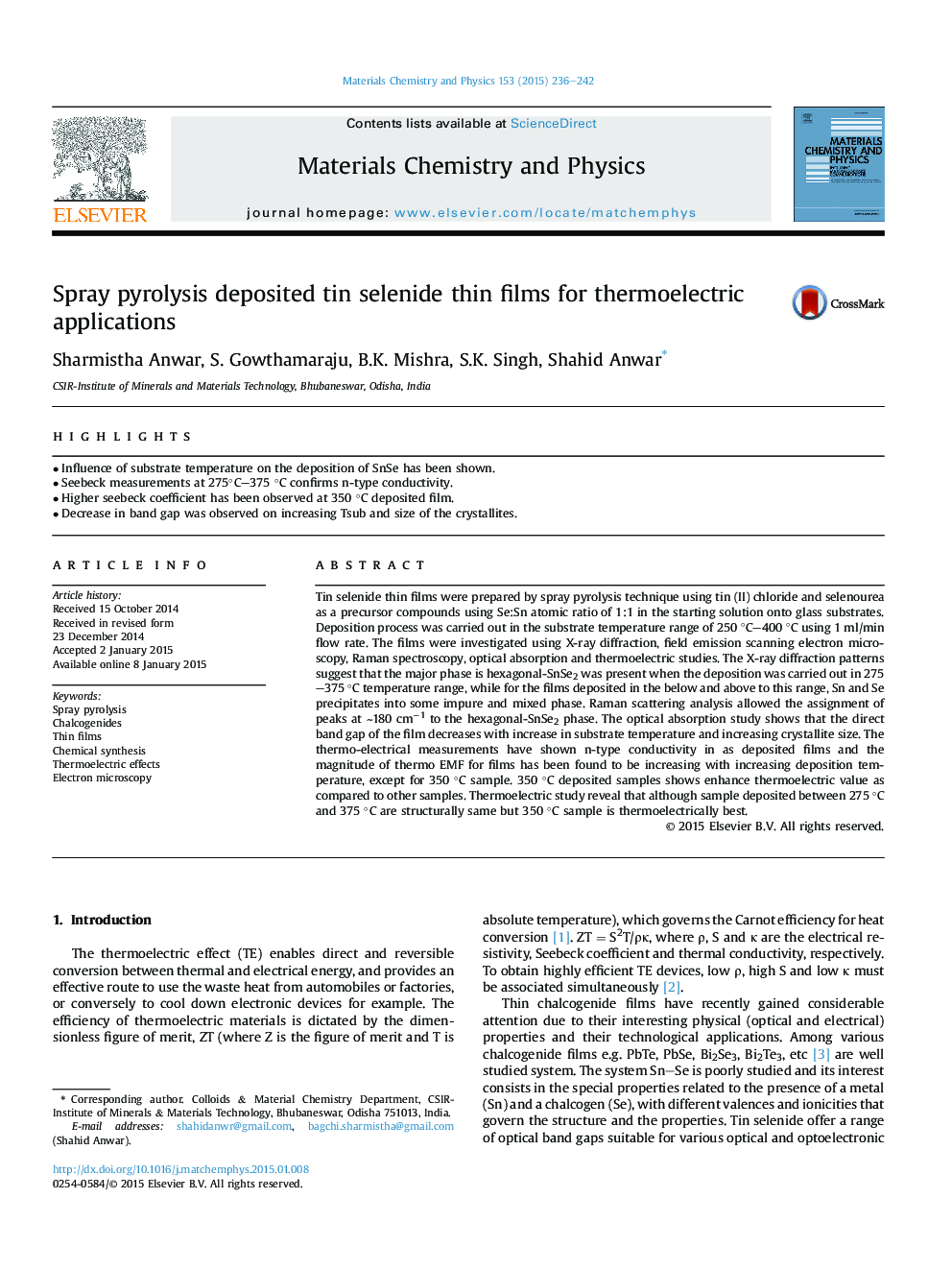| کد مقاله | کد نشریه | سال انتشار | مقاله انگلیسی | نسخه تمام متن |
|---|---|---|---|---|
| 1521564 | 1511810 | 2015 | 7 صفحه PDF | دانلود رایگان |
• Influence of substrate temperature on the deposition of SnSe has been shown.
• Seebeck measurements at 275°C–375 °C confirms n-type conductivity.
• Higher seebeck coefficient has been observed at 350 °C deposited film.
• Decrease in band gap was observed on increasing Tsub and size of the crystallites.
Tin selenide thin films were prepared by spray pyrolysis technique using tin (II) chloride and selenourea as a precursor compounds using Se:Sn atomic ratio of 1:1 in the starting solution onto glass substrates. Deposition process was carried out in the substrate temperature range of 250 °C–400 °C using 1 ml/min flow rate. The films were investigated using X-ray diffraction, field emission scanning electron microscopy, Raman spectroscopy, optical absorption and thermoelectric studies. The X-ray diffraction patterns suggest that the major phase is hexagonal-SnSe2 was present when the deposition was carried out in 275–375 °C temperature range, while for the films deposited in the below and above to this range, Sn and Se precipitates into some impure and mixed phase. Raman scattering analysis allowed the assignment of peaks at ∼180 cm−1 to the hexagonal-SnSe2 phase. The optical absorption study shows that the direct band gap of the film decreases with increase in substrate temperature and increasing crystallite size. The thermo-electrical measurements have shown n-type conductivity in as deposited films and the magnitude of thermo EMF for films has been found to be increasing with increasing deposition temperature, except for 350 °C sample. 350 °C deposited samples shows enhance thermoelectric value as compared to other samples. Thermoelectric study reveal that although sample deposited between 275 °C and 375 °C are structurally same but 350 °C sample is thermoelectrically best.
Journal: Materials Chemistry and Physics - Volume 153, 1 March 2015, Pages 236–242
